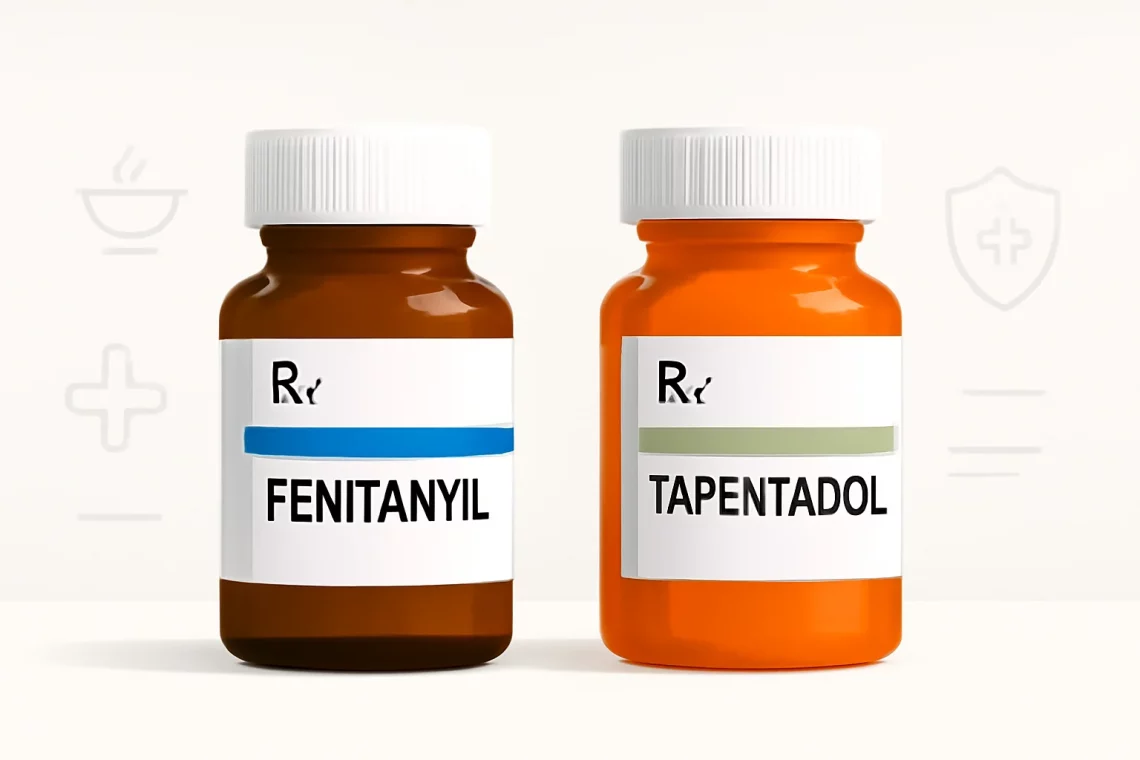
Fentanyl vs Tapentadol: Key Differences and Comparisons Explained
Fentanyl and tapentadol are two powerful medications often used in pain management, but they differ significantly in their composition, mechanisms of action, and clinical applications. Understanding these differences is crucial for patients, healthcare providers, and anyone involved in pain management. Fentanyl is a synthetic opioid that is typically prescribed for severe pain, particularly in patients who are tolerant to other opioids. It is known for its potency and rapid onset of action, making it a go-to choice in acute pain scenarios, such as post-surgical recovery or cancer-related pain.
On the other hand, tapentadol is a relatively newer medication that combines two mechanisms of action: it acts as an opioid analgesic and also inhibits the reuptake of norepinephrine. This dual action allows tapentadol to address pain through different pathways, potentially offering benefits for patients who may not respond well to traditional opioids. The differences in their pharmacological profiles raise important considerations regarding their use, potential side effects, and risk of dependency. As the landscape of pain management continues to evolve, understanding the nuances between these medications is essential for effective treatment strategies.
Understanding Fentanyl
Fentanyl is a potent synthetic opioid that is significantly stronger than morphine, approximately 50 to 100 times more potent. It is primarily used in medical settings for the management of severe pain, often in patients who have developed a tolerance to other opioid medications. Fentanyl is available in various forms, including patches, lozenges, and injectable solutions, allowing for flexible administration depending on the patient’s needs.
The mechanism of action of fentanyl involves binding to the body’s opioid receptors, which are located in the brain, spinal cord, and other tissues. This binding action inhibits the transmission of pain signals, providing rapid relief from severe pain. The onset of action for fentanyl can be very quick, especially when administered through intravenous or transmucosal routes, making it particularly useful in acute care situations.
However, the potency of fentanyl also comes with significant risks. The potential for overdose is high, especially when used improperly or in conjunction with other central nervous system depressants, such as alcohol or benzodiazepines. Fentanyl has been at the center of the opioid crisis, with illicitly manufactured fentanyl contributing to a rise in overdose deaths. As a result, its prescription is highly regulated, and healthcare providers must carefully assess the appropriateness of its use for each patient.
Moreover, patients prescribed fentanyl must be closely monitored for signs of respiratory depression, sedation, and potential dependency. Tolerance to fentanyl can develop quickly, necessitating higher doses to achieve the same pain relief, which can increase the risk of adverse effects. Therefore, while fentanyl can be an effective option for managing severe pain, it requires careful consideration and management by healthcare professionals to ensure patient safety.
Exploring Tapentadol
Tapentadol is a unique medication that offers a different approach to pain management. It is classified as a centrally acting analgesic, and its dual mechanism of action distinguishes it from traditional opioids. Tapentadol not only binds to the mu-opioid receptors, similar to other opioids, but it also inhibits the reuptake of norepinephrine, a neurotransmitter involved in the modulation of pain. This combination can provide effective pain relief while potentially reducing some of the side effects commonly associated with opioid use.
One of the key advantages of tapentadol is its lower potential for abuse compared to traditional opioids. Due to its dual action, the medication may produce less euphoria, which is often a driving factor in opioid addiction. This characteristic makes tapentadol an appealing option for patients who are at risk for substance use disorders or those who have experienced issues with opioid medications in the past.
Tapentadol is typically prescribed for moderate to severe pain, including conditions such as neuropathic pain and pain following surgery. The medication is available in immediate-release and extended-release formulations, providing flexibility in dosing based on the patient’s pain management needs. Patients often report a favorable side effect profile with tapentadol, including lower incidences of constipation and sedation compared to traditional opioids.
However, like all medications, tapentadol is not without its risks. Side effects can include nausea, dizziness, and headache, and there is still a potential for dependency, especially with long-term use. It is essential for healthcare providers to evaluate each patient’s individual situation and medical history when considering tapentadol as a treatment option. Overall, tapentadol represents a valuable addition to the arsenal of pain management strategies, particularly for those seeking alternatives to conventional opioids.
Comparing Efficacy and Safety
When comparing fentanyl and tapentadol, it is essential to consider their efficacy and safety profiles in various clinical scenarios. Fentanyl is often favored for acute, severe pain, such as that experienced in postoperative settings or in patients undergoing cancer treatment. Its rapid onset and potency make it suitable for situations where immediate pain relief is necessary. However, the risks associated with fentanyl, particularly overdose and respiratory depression, cannot be overstated. Its use requires careful monitoring and management by healthcare professionals to minimize these risks.
In contrast, tapentadol may be more appropriate for chronic pain conditions or for patients who have not responded well to other pain medications. Its dual-action mechanism offers a unique approach to pain relief, potentially allowing for effective management of both nociceptive and neuropathic pain. Additionally, the lower risk of abuse associated with tapentadol makes it a compelling option for patients with a history of substance use disorders.
Both medications have their place in pain management, but their selection should be based on a thorough assessment of the patient’s medical history, pain severity, and risk factors. Healthcare providers must weigh the benefits against the potential risks and consider individual patient needs when prescribing these medications. Ongoing communication between patients and providers is crucial to ensure that pain management strategies are effective and safe.
Ultimately, the choice between fentanyl and tapentadol should be guided by clinical evidence, patient preferences, and a comprehensive understanding of each medication’s pharmacology. By tailoring pain management approaches to the individual’s needs, healthcare providers can optimize outcomes and improve the quality of life for patients dealing with chronic pain.
Conclusion
In conclusion, fentanyl and tapentadol are two distinct medications used for pain management, each with its own benefits and risks. Fentanyl, with its potent opioid properties, is best suited for severe, acute pain but comes with a high risk of dependency and overdose. Tapentadol, on the other hand, offers a dual mechanism of action that may be particularly beneficial for chronic pain patients and those at risk for substance abuse.
Choosing between these medications involves careful consideration of the patient’s condition, treatment history, and potential side effects. Healthcare providers play a vital role in guiding patients through this decision-making process, ensuring that the chosen pain management strategy aligns with both safety and efficacy.
As the landscape of pain management evolves, understanding the nuances of various medications remains critical. By fostering open communication and continuous evaluation of treatment efficacy, healthcare providers and patients can work together to achieve optimal pain relief while minimizing risks.
**Disclaimer:** This article is for informational purposes only and does not constitute medical advice. Always consult a healthcare professional for medical concerns or questions regarding treatment options.




